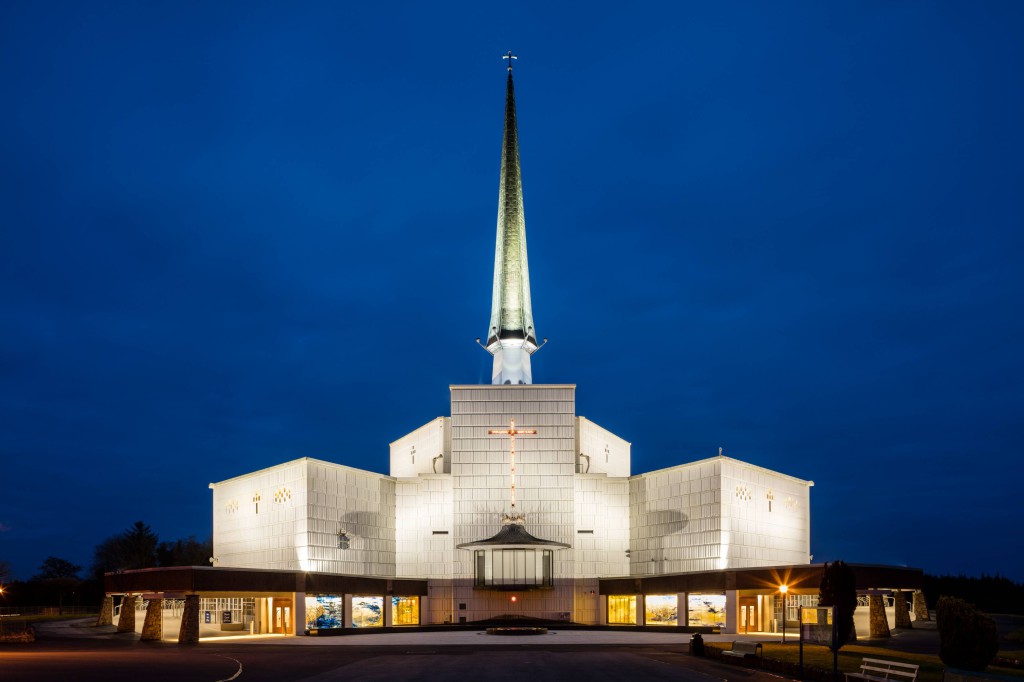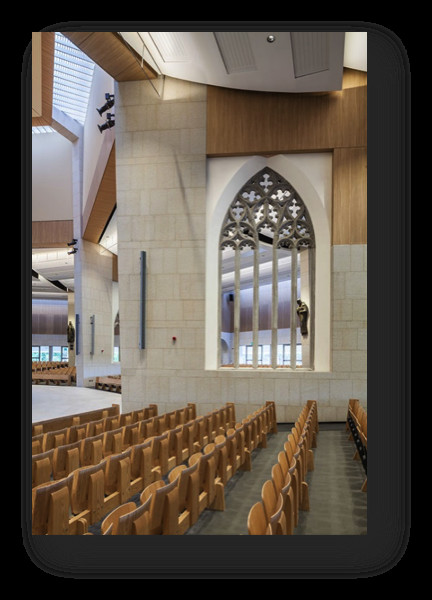A warmer place to worship

When Knock Basilica in Ireland required a new, energy efficient heating system to heat its large internal space, Zehnder Group and its partner, Versatile, implemented a low pressure hot water radiant solution that was able to overcome a number of existing challenges.
Knock Basilica in County Mayo, Ireland, serves the Roman Catholic Archdiocese of Tuam and forms part of the Knock Shrine grounds, incorporating four other churches. It was designed in a modern architecture style with concrete materials by architect Daithi Hanly, and completed in 1976.
The Basilica can accommodate around 10,000 people at a time and is attended both by local parishioners and also a vast number of pilgrims and tourists who travel to the shrine grounds each year.
The building itself features extremely high ceilings and a huge inside space, presenting a challenge in terms of heating. This issue was exacerbated during the winter, as cold discomfort issues were often experienced within the chapel areas by the parishioners and visitors.
A solution was needed to ensure the refurbished building was sufficiently heated when full but especially during the colder winter months when the building was only frequented intermittently by the congregation. M&E consultant IN2 Engineering was hired in conjunction with A&D Wejchert Architects to design a heating system to control the indoor climate.
Challenges and complexities
A heating solution was needed to heat the entire space, accommodating ceiling heights of up to 30m. The design brief showed a number of curved false ceilings, which presented its own challenges and complexities that needed to be factored into the final specification. And the existing system fitted into the Basilica meant that air was being distributed ineffectively, making the temperature uncomfortable for occupants.
It was also apparent that efficiency was a challenge in the building. The Basilica often lay vacant for months and was only used intermittently, so an engineering solution was required which would be responsive only when needed.
It was deemed uneconomical to reconfigure the existing air handling units, as the ceilings were so high and, as warm air rises, this would result in high lifecycle and maintenance costs, so a full redesign was required to create an energy efficient and all-year-round climate solution, creating cost efficiencies and increased thermal comfort across the board.
Project partners
Tasked with finding a cost and energy efficient heating solution that could overcome these challenges, IN2 Engineering approached Versatile, Zehnder Group’s partner in Ireland, to implement a low pressure hot water (LPHW) radiant solution. This would need to be integrated into the ceiling to heat the space.

LPHW radiant panels were the preferred choice for this project as radiant panels do not heat the air – they heat the surfaces or objects they reflect on and, in turn, those objects or surfaces act as radiant panels, generating sufficient heat for the room.
A radiant heating and cooling system will work in conjunction with the fabric mass of the building in direct heat transfer and storage, helping to achieve the required comfort level at a reduced energy input and cost.
Radiant panels provide an effective and efficient way to heat large spaces, such as sports halls and industrial units – as well as churches and cathedrals. These bigger buildings benefit from their quick response and highly efficient transfer of heat to the appropriate area.
The radiant properties create comfort for the building occupants much more effectively and efficiently than heating large air volumes, via other forms of heating. Radiant panels are also considered to be a viable alternative to conditioning air through traditional ducted systems and fan coil units.
The use of radiant panels, especially in the case of the Knock Basilica, meant no moving parts, no filtration and no draughts, drastically reducing running costs and the negative impact on indoor air quality.
Appealing design
The clean, unobtrusive design of radiant panels is appealing to architects and interior designers too as they blend seamlessly into the building architecture and create more space in the actual habitable areas of the building. By moving all heating and cooling requirements to above the congregation, wall space was freed up for other purposes. The radiant panels were easy to install and if required can also incorporate lighting, sensors and other services, all of which reduce installation time, cost and risk.
Zehnder and Versatile provided a solution which complemented the Basilica’s unique design, integrating radiant panels into the curved ceiling sails, contributing to the absorption of noise as well as heating the congregation space effectively and rapidly. The result was a tasteful yet practical solution that would serve the building for future years to come, while remaining energy efficient and keeping running costs low.
David Walshe, Technical Director at IN2 Engineering, said: “The panels provided by Zehnder and Versatile delivered the required levels of efficiency and flexibility, meaning that the building could be heated to a level that was comfortable for all visitors, while saving on energy and cost.”







